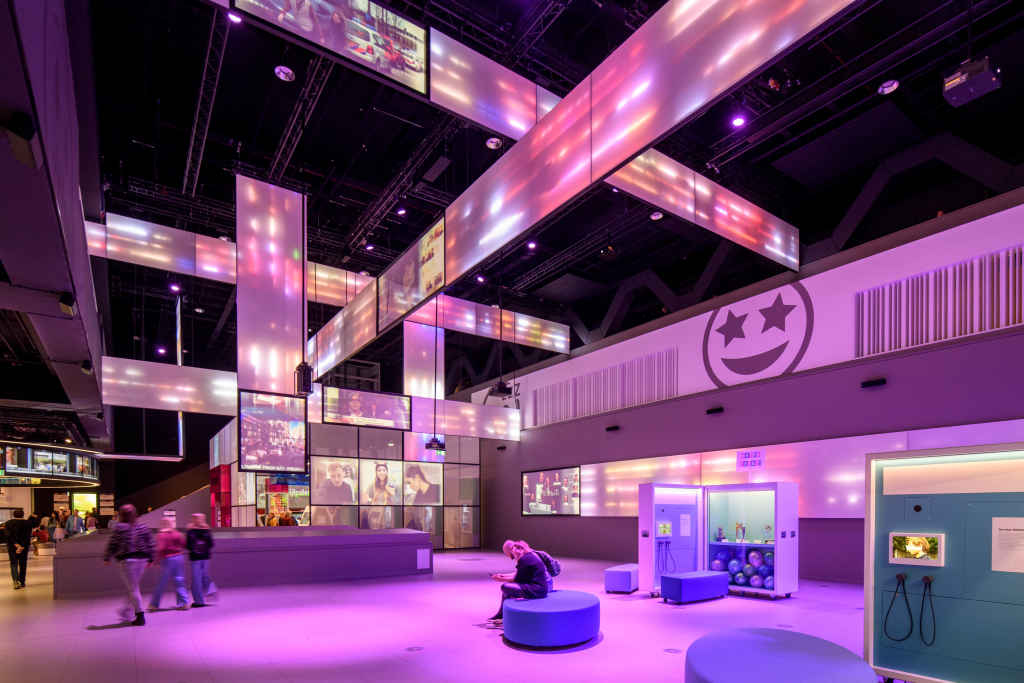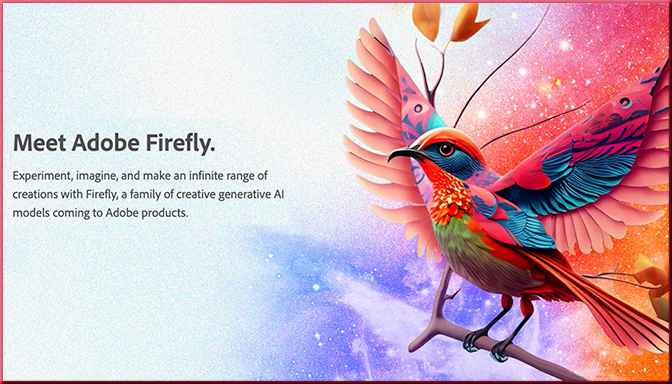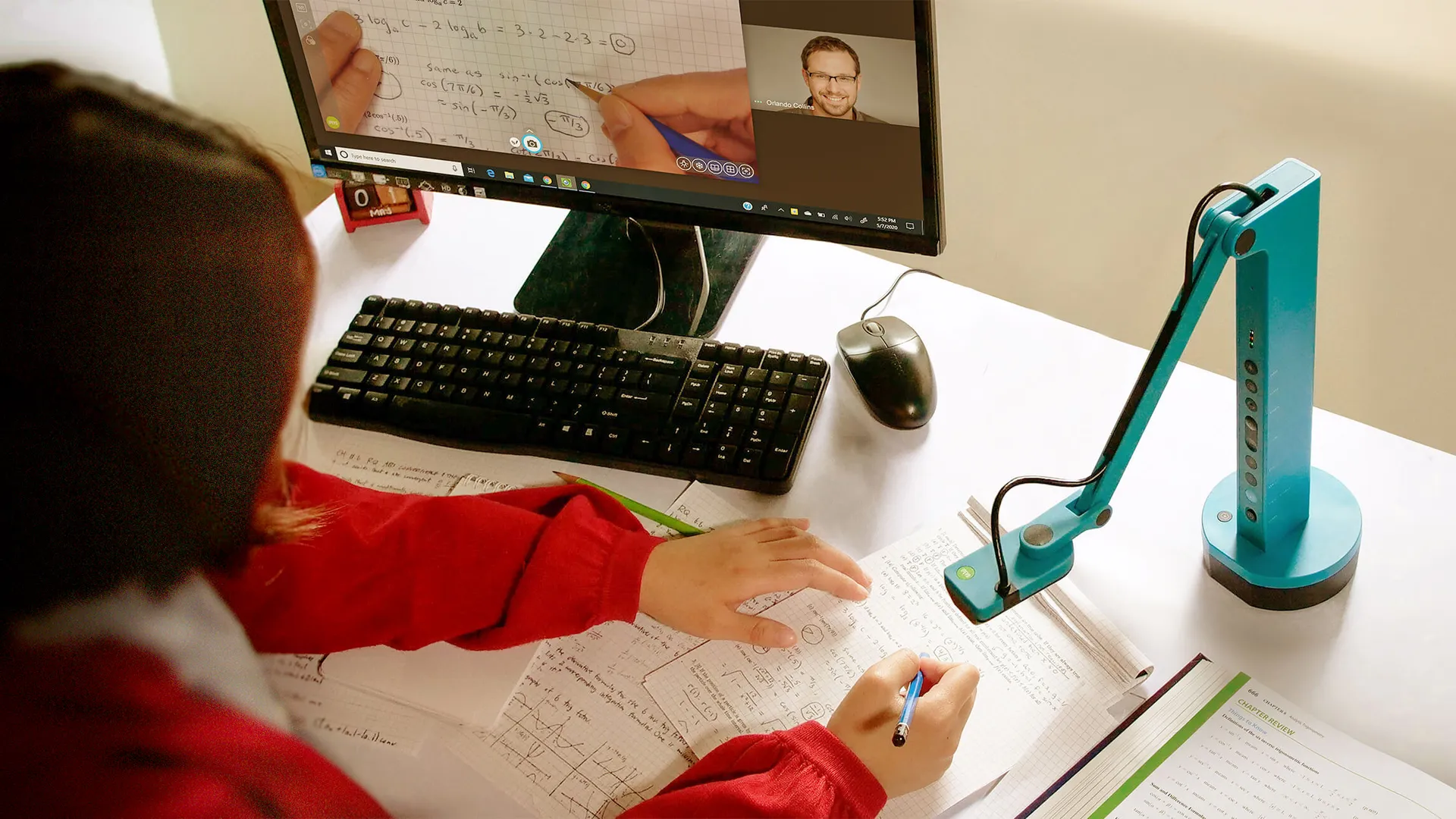Adobe’s AI Generator Firefly Looks To Reimagine Video and Audio Workflows — from provideocoalition.com by Michelle DeLateur
Excerpt:
What if you could create storyboards, change the color of a video, and generate relevant sound effects just by working with an AI Generator? It may be on the (generated sunset) horizon sooner rather than later: Adobe hopes to transform these processes through their AI product Firefly. As shared today at NAB Show 2023, Adobe looks to expand and innovate Firefly’s ability in the creative sphere, including font changes and effects, script analysis, color changes, generated music, storyboard edits, and more.
A museum without screens: The Media Museum of Sound and Vision in Hilversum — from inavateonthenet.net
Excerpt:
Re-opened to the public last month after five years of planning and two-and-a-half years of renovations, The Media Museum of Sound and Vision in Hilversum in the Netherlands, is an immersive experience exploring modern media. It’s become a museum that continuously adapts to the actions of its visitors in order to reflect the ever-changing face of media culture.
How we consume media is revealed in five zones in the building: Share, Inform, Sell, Tell and Play. The Media Museum includes more than 50 interactives, with hundreds of hours of AV material and objects from history. The experience uses facial recognition and the user’s own smartphone to make it a personalised museum journey for everyone.

Photo from Mike Bink
From DSC:
Wow! There is some serious AV work and creativity in the Media Museum of Sound and Vision!
Also relevant/see:
- “Godfather of artificial intelligence” weighs in on the past and potential of AI — from cbsnews.com
- Sketching the Field of AI Tools for Local Newsrooms — from medium.com by Dalia Hashim
- Adobe Firefly, Bing Image Creator, Canva’s AI, ChatGPT Plugins, Google Workspace AI, Microsoft Loop, Runway Gen2 – Volume 03 — from heatherbcooper.substack.com by Heather Cooper
Another week of everything, everywhere, all at once in AI news – and get my free AI Visual toolkit! - It takes a few dollars and 8 minutes to create a deepfake. And that’s only the start — from npr.org by Shannon Bond; with thanks to Mr. Robert Gibson on LinkedIn for this resource
- We’ve just gone from a simple teacher-learner model to a new world of AI teachers – a new pedAIgogy — from donaldclarkplanb.blogspot.com by Donald Clark
- ChatGPT is about to revolutionize the economy. We need to decide what that looks like. — from technologyreview.com by David Rotman
New large language models will transform many jobs. Whether they will lead to widespread prosperity or not is up to us. - Is GPT-4 Worth the Subscription? Here’s What You Should Know — from wired.com Reece Rogers
The new algorithm is exclusive to ChatGPT Plus, OpenAI’s subscriber-only service. We signed up and put it to the test. - Superhuman: What can AI do in 30 minutes? — from oneusefulthing.substack.com Ethan Mollick
AI multiplies your efforts. I found out by how much…
Houses of worship to move streaming from social media to dedicated platforms — from inavateonthenet.net
Excerpt:
A report by Pushpay, with data from over 1,700 organisations has found that while 91% of churches currently livestream worship services on social media, only 47% plan to do the same in the upcoming year.
The report, entitled ‘State of Church Tech 2023 is available to download here.
The reason cited for this shift is organisations’ lack of control on social media platforms to maintain engagement, as users are bombarded with pop-up windows, notifications, status updates, and more.
This is driving a rise in custom video players, website embeds, mobile app streaming, and other platforms that are better suited to maintain engagement.
Meet Adobe Firefly. — from adobe.com
Experiment, imagine, and make an infinite range of creations with Firefly, a family of creative generative AI models coming to Adobe products.
Generative AI made for creators.
With the beta version of the first Firefly model, you can use everyday language to generate extraordinary new content. Looking forward, Firefly has the potential to do much, much more.
Also relevant/see:
Gen-2: The Next Step Forward for Generative AI — from research.runwayml.com
A multi-modal AI system that can generate novel videos with text, images, or video clips.
No lights. No camera. All action.Realistically and consistently synthesize new videos. Either by applying the composition and style of an image or text prompt to the structure of a source video (Video to Video). Or, using nothing but words (Text to Video). It’s like filming something new, without filming anything at all.
FBI, Pentagon helped research facial recognition for street cameras, drones — from washingtonpost.com by Drew Harwell
Internal documents released in response to a lawsuit show the government was deeply involved in pushing for face-scanning technology that could be used for mass surveillance
Excerpt:
The FBI and the Defense Department were actively involved in research and development of facial recognition software that they hoped could be used to identify people from video footage captured by street cameras and flying drones, according to thousands of pages of internal documents that provide new details about the government’s ambitions to build out a powerful tool for advanced surveillance.
From DSC:
This doesn’t surprise me. But it’s yet another example of opaqueness involving technology. And who knows to what levels our Department of Defense has taken things with AI, drones, and robotics.
A quick and sobering guide to cloning yourself — from oneusefulthing.substack.com by Professor Ethan Mollick
It took me a few minutes to create a fake me giving a fake lecture.
Excerpt:
I think a lot of people do not realize how rapidly the multiple strands of generative AI (audio, text, images, and video) are advancing, and what that means for the future.
With just a photograph and 60 seconds of audio, you can now create a deepfake of yourself in just a matter of minutes by combining a few cheap AI tools. I’ve tried it myself, and the results are mind-blowing, even if they’re not completely convincing. Just a few months ago, this was impossible. Now, it’s a reality.
To start, you should probably watch the short video of Virtual Me and Real Me giving the same talk about entrepreneurship. Nothing about the Virtual Me part of the video is real, even the script was completely AI-generated.
.
From DSC:
Also, I wanted to post the resource below just because I think it’s an excellent question!
If ChatGPT Can Disrupt Google In 2023, What About Your Company? — from forbes.com by Glenn Gow
Excerpts:
Board members and corporate execs don’t need AI to decode the lessons to be learned from this. The lessons should be loud and clear: If even the mighty Google can be potentially overthrown by AI disruption, you should be concerned about what this may mean for your company.
…
Professions that will be disrupted by generative AI include marketing, copywriting, illustration and design, sales, customer support, software coding, video editing, film-making, 3D modeling, architecture, engineering, gaming, music production, legal contracts, and even scientific research. Software applications will soon emerge that will make it easy and intuitive for anyone to use generative AI for those fields and more.
.
















